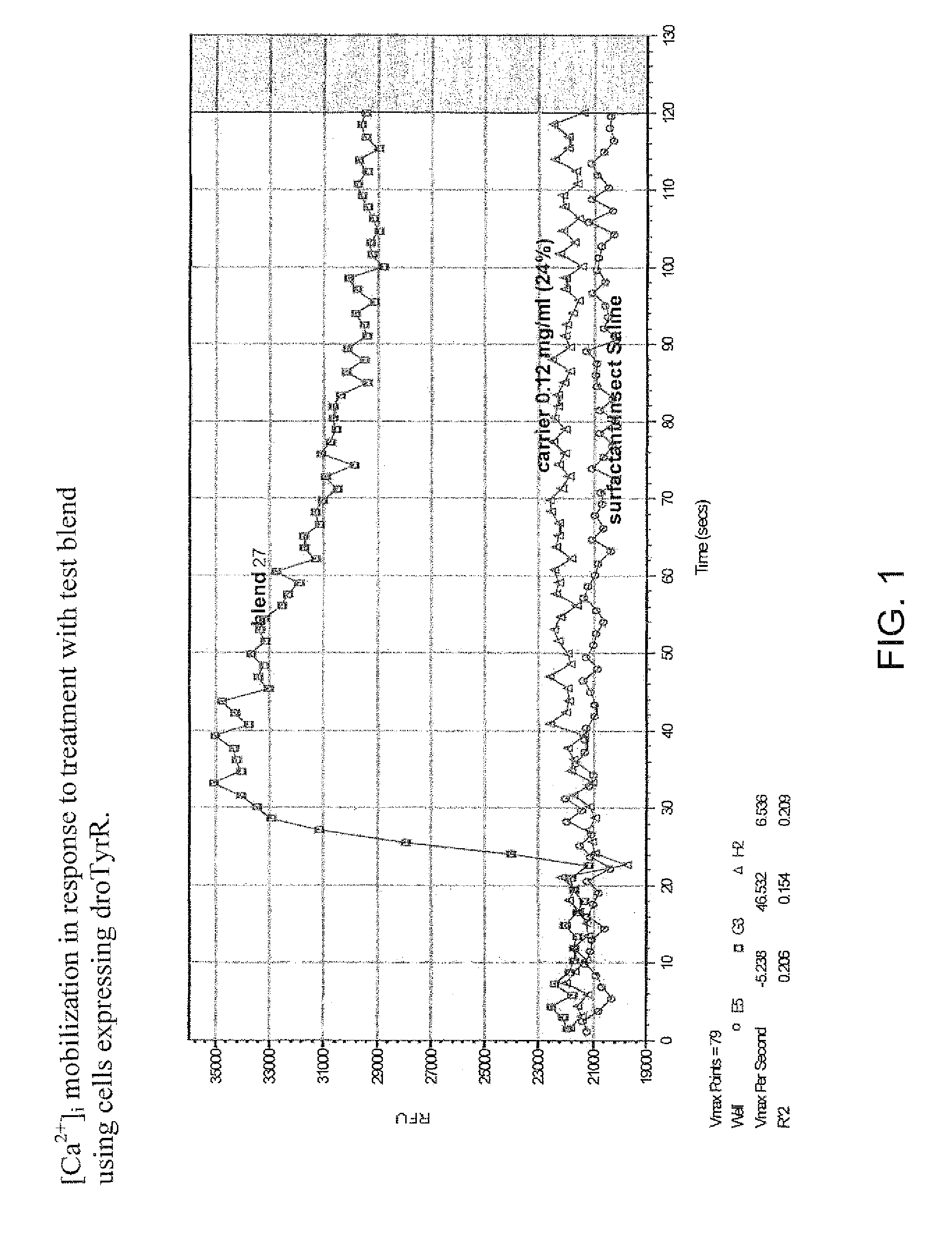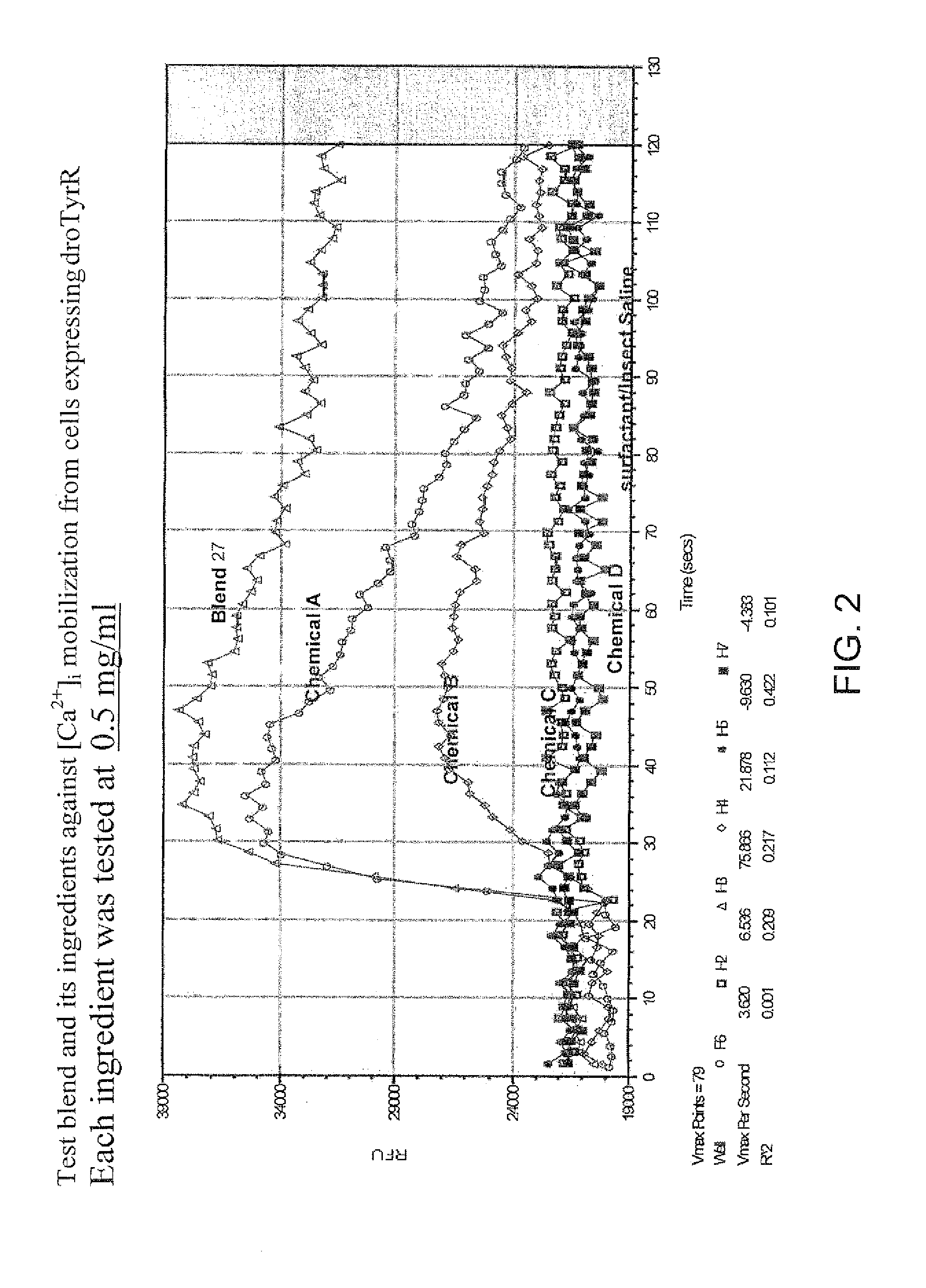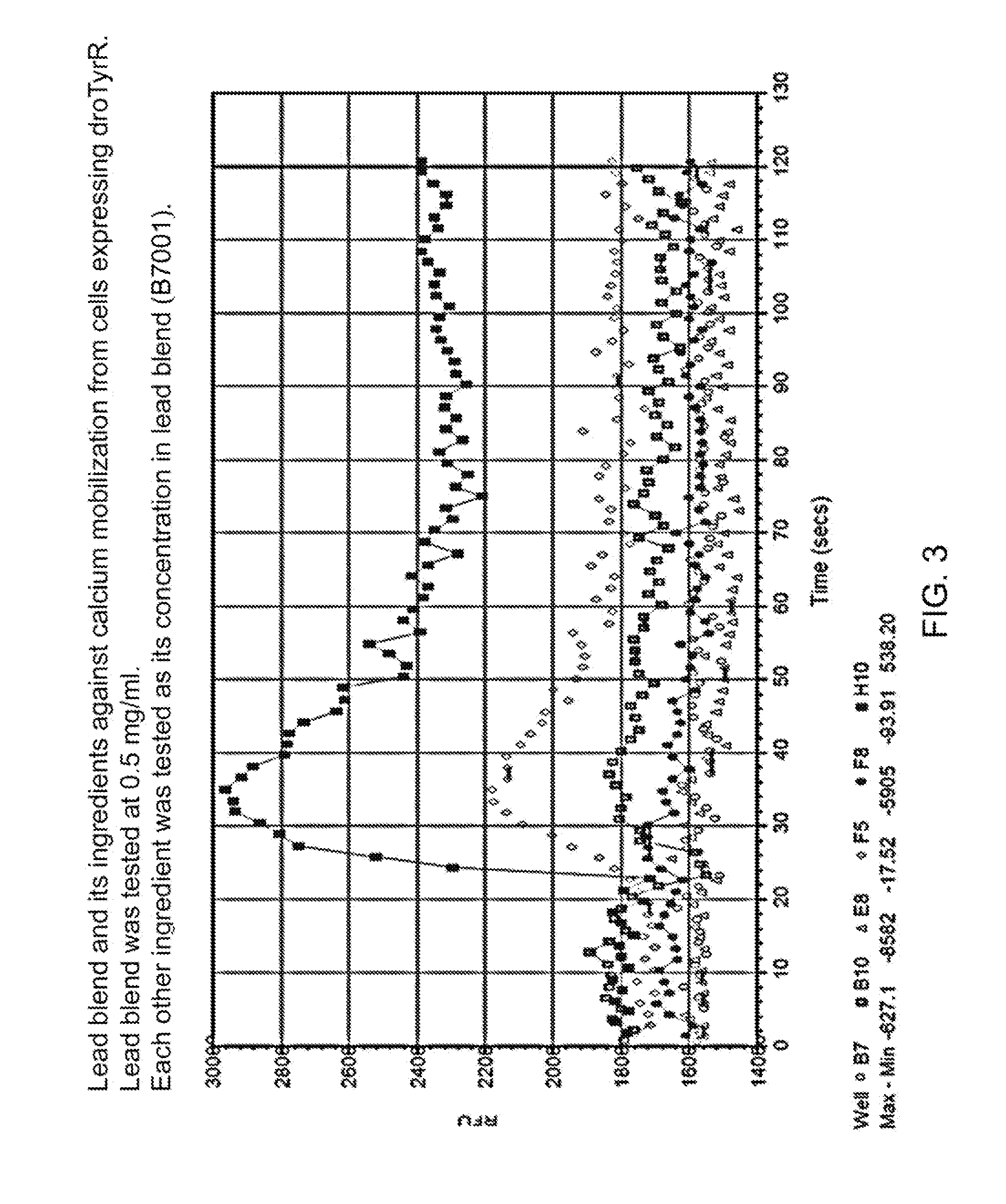Pest control using natural pest control agent blends
a technology of pest control agent and blend, which is applied in the direction of antiparasitic agents, drug compositions, instruments, etc., can solve the problems of difficult identification of other non-target species, toxic or deleterious effects of use, and difficulty in identifying other non-target species
- Summary
- Abstract
- Description
- Claims
- Application Information
AI Technical Summary
Benefits of technology
Problems solved by technology
Method used
Image
Examples
example 1
In Vitro Synergistic Response to a Blend Containing Natural Ingredients
[0241]A blend of oils, denoted as Blend 27 (also referred to in the figures as “B7001” or “Armor Lead Blend”), was prepared and set aside. The composition of this blend in weight percent format is provided below:
[0242]
TABLE ABlend 27 from OilsCASDescriptionWt / wt80-56-8Alpha-Pinene, 98%3.78%78-70-6Linalool Coeur6.63%Canola Oil24.0%99-87-6Para-Cymene28.39% 89-83-8Thymol37.17%
[0243]where soy bean oil (CAS 8016-70-4) can also be substituted for canola oil.
[0244]The blend (at a final concentration of 0.5 mg / mL) was tested on a Drosophila Scheider 2 (“S2”) cell line that was stably transfected with a DNA encoding a tyramine receptor that was amplified from a Drosophila melanogaster head cDNA phage library (“droTyrR”). The intracellular calcium levels (“[Ca2+]i”) in the treated S2 cells were then measured as a function of time. As a comparison, the a solution of carrier (canola oil, final concentration=0.12 mg / mL) and ...
example 2
Synergistic Response to a Blend Containing Natural Ingredients on Ascaris Suum
[0247]Blend 27 (also referred to in the figures as “B7001” or “Armor Lead Blend”) was prepared and set aside as described (Example 1). The blend, as well as solutions containing individual ingredients (A=thymol, B=para-cymene, C=linalool coeur, D=alpha-pinene (or “a-pinene”), carrier=canola oil) that make up the blend, were administered to the endoparasite Ascaris suum in RPMI 1640 culture media containing antibiotics and antimycotic agents (10 worms per test). The final concentration of the blend tested was 10 μg / mL, while the final concentrations of the individual ingredients reflected the % (v / v) in which they are found in the blend. As a control, a solution of surfactant (sugar ester OWA-1570) was tested separately. The results indicated that treatment with Blend 27 resulted in a synergistic effect on the mortality of the endoparasites compared to that observed with administration of the individual in...
example 3
Synergistic Response to Blends Containing Natural Ingredients On Various Endoparasites
[0248]Blend 27 (also referred to in the figures as “B7001” or “Armor Lead Blend”) was prepared and set aside as described (Example 1). A separate blend of oils, denoted as Blend 58, was prepared and set aside. The composition of this blend in weight percent format is provided below:
[0249]
TABLE BBlend 58 from OilsCASDescriptionWt / wt99-87-6Para-Cymene1.870%80-56-8Alpha-Pinene, 98%4.664%4180-23-8Trans-Anethole19.305%89-83-8Thymol36.719%78-70-6Linalool Coeur37.442%
[0250]Various amounts of each blend (to achieve a final concentration ranging from 0.1 μg / mL to 10 μg / mL) were administered to the endoparasite Ascaris suum in RPMI 1640 culture media containing antibiotics and antimycotic agents (3 worms per test). The worms were then checked at 30 minutes, 120 minutes, 320 minutes and 72 hours after administration of the blends to determine the numbers of worms killed by the addition of the blend. As a cont...
PUM
| Property | Measurement | Unit |
|---|---|---|
| concentration | aaaaa | aaaaa |
| concentrations | aaaaa | aaaaa |
| concentration | aaaaa | aaaaa |
Abstract
Description
Claims
Application Information
 Login to View More
Login to View More - R&D
- Intellectual Property
- Life Sciences
- Materials
- Tech Scout
- Unparalleled Data Quality
- Higher Quality Content
- 60% Fewer Hallucinations
Browse by: Latest US Patents, China's latest patents, Technical Efficacy Thesaurus, Application Domain, Technology Topic, Popular Technical Reports.
© 2025 PatSnap. All rights reserved.Legal|Privacy policy|Modern Slavery Act Transparency Statement|Sitemap|About US| Contact US: help@patsnap.com



